On the second day of 2022 one of the world’s most legendary rallies kicks off for two weeks of hard driving, fast living and fierce competition. The Dakar, formerly the Paris-Dakar, sees the field compete for glory in Saudi Arabia. Cars, 4x4s, pickup trucks, wild quad bikes, motorcycles and trucks must race against time and battle against the desert – just as they have always done.
But what started as an outlandish event for only the most adventurous souls – one that hit the national headlines, in 1982, when Mark Thatcher, son of Margaret Thatcher, and his two teammates went missing in the Sahara for six days – has become somewhat more sanitised, like so much else in motorsport.

Before the competitors line up at the start line of the 2022 Dakar rally, we look back at 10 of the most extreme machines ever to take part in the history of the event.
Rolls-Royce Corniche
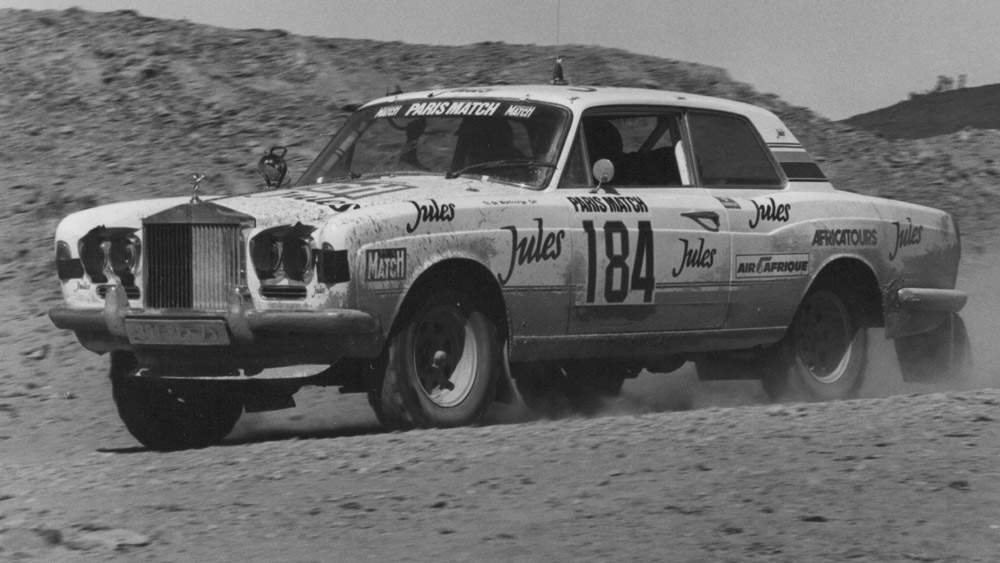
This Rolls-Royce Corniche may look like any Corniche occasionally spotted padding around Belgravia or the Cotswolds but it bears little resemblance beneath the surface. The car was entered in the 1981 Paris-Dakar, the third event – when owner Jean-Christophe Pelletier became fed up of its unreliability. Co-driver Thierry de Montcorgé recounted that it had been done for a bet.
Having secured the biggest sponsorship deal in the event’s history by that time (Jules by Christian Dior), the car was stripped to pieces, rebuilt using a tubular spaceframe, a new lightweight fibreglass shell was specially built, a 350bhp Chevrolet small block V8 installed and the chassis from a Toyota Land Cruiser adapted into a tubular spaceframe. Having established itself as one of the earliest specials built for the event, it was one of just 40 cars to complete the event that year.
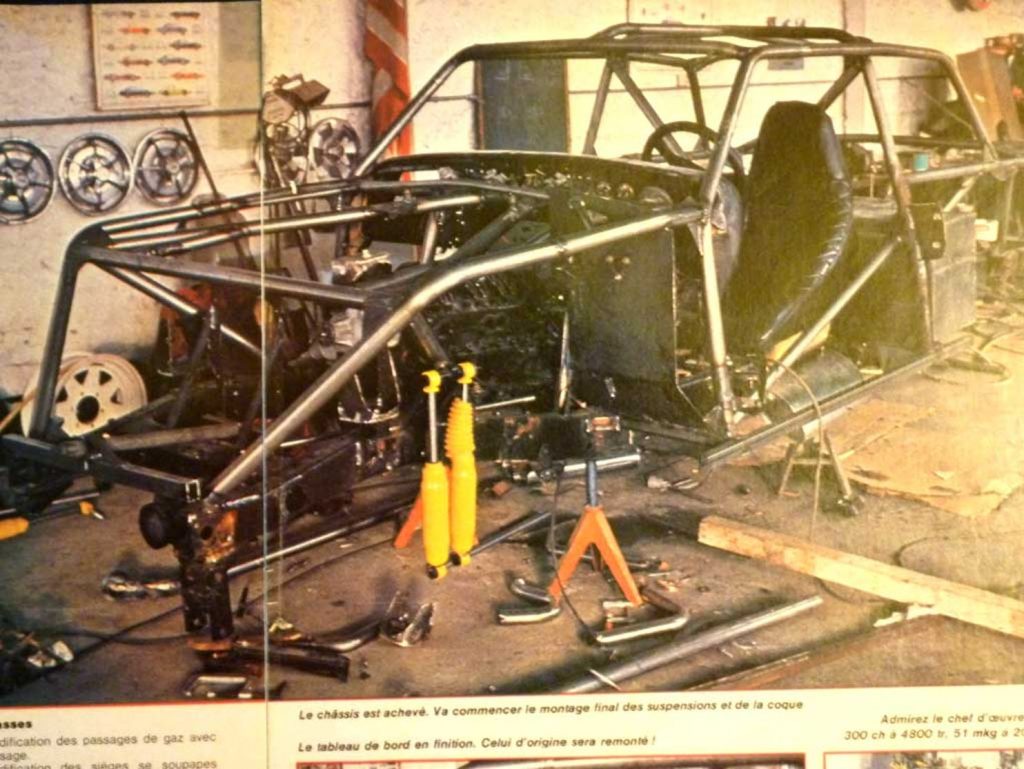
It ditched the air conditioning and even the drinks cabinet, but that didn’t stop Pelletier and de Montcorgé living the good life. Each night, deep in the Sahara, the pair would set up an impromptu bivouac and, treat themselves to oysters, champagne and Pomerol. Unfortunately a repair had been deemed to take too long, so it was disqualified from the official finishing positions. Thierry de Montcorgé would return in 1984 with a six wheeled leviathan, also sponsored by Christian Dior.
Porsche 959
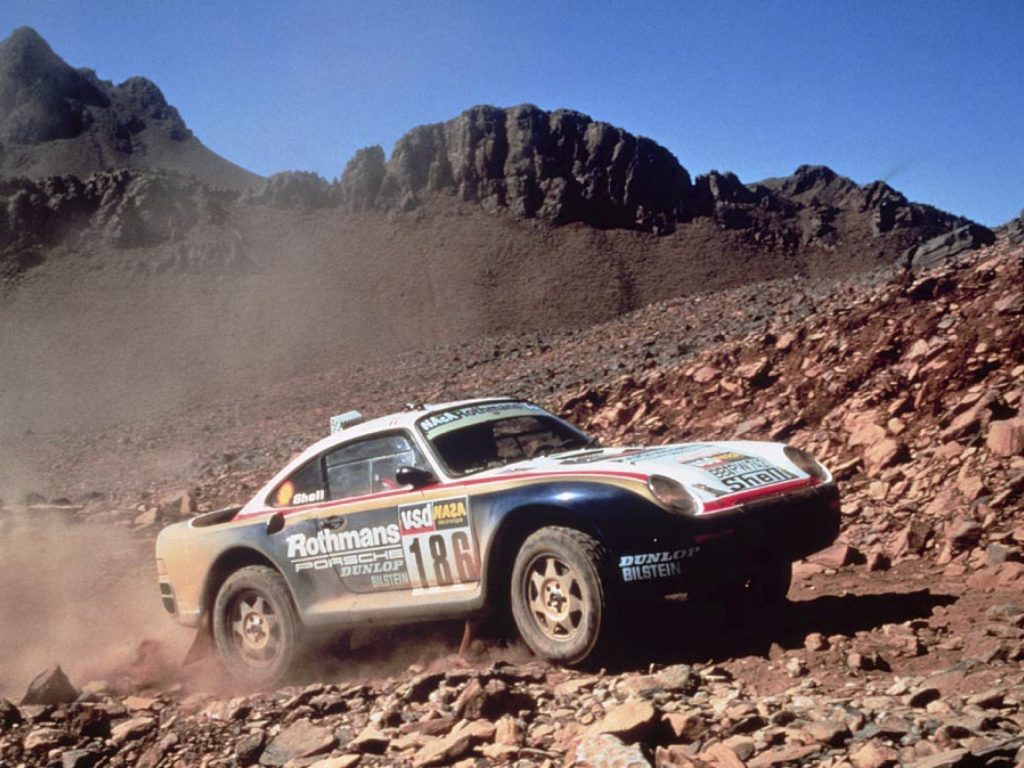
Porsche had surprised itself with just how well its first entry into the Paris-Dakar Rally had gone. The 1984 953 was effectively a raised, all-wheel drive 911, and had in its only year achieved overall victory at the event. Porsche, buoyed by such achievements, returned to the drawing board to create a more extreme variant capable of holding off the competition.
It chose as its basis the 959, which had undergone development as a potential Group B rally entrant. A mixture of Kevlar and aluminium panels was used to ensure a light, stiff shell, and sequential twin turbochargers were used to provide a smoother power flow than the roadgoing 911 Turbo. A total of 444bhp was extracted from the 2.9-litre engine thanks to the turbos and the quad cam head as used in the 956 and 962 endurance racing machines. The prototype 959s failed to finish in 1985’s Dakar rally, though modifications for 1986 saw then regain the top spot. This would prove to be the 959’s only real off road victory, as the Group B rally category was abolished the year before Porsche was ready to produce the necessary roadgoing models to homologate it.
Mitsubishi Pajero Evolution
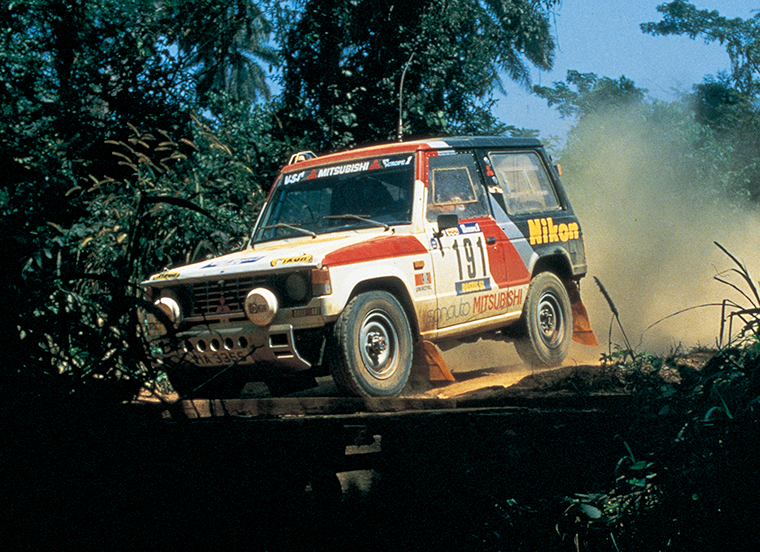
There have been 42 Dakar Rallies. A Mitsubishi Pajero Evolution has won twelve of them. With odds like that, it’s clearly a force to be reckoned with, an extreme off roader that can hold back the competition regardless of its size or shape. Unbelievably, somewhere in the mix there was a road going model – with 2500 built in 1997 and 1998 to homologate the car for the T2 class. The first Pajero Evolution won in 1985, with surprisingly few modifications over the standard roadgoing Pajero. As time has passed however, the cars have grown more and more extreme. From 2001 to 2007, the Pajero V60 based models had a solid winning streak – boosted by a combination of a ladder chassis and a monocoque body for greater rigidity. The fuel tank was ahead of the rear axle for weight distribution purposes, and rack and pinion steering improved its direct feel.
Not only have Pajeros taken 12 wins, but 175 stage wins – more than twice that of its nearest competitor. It’s clear that if you want a car capable of taking on the extreme nature of the Dakar, you need to look to Mitsubishi.
Peugeot 205 T16 Grand Raid
Peugeot’s 205 T16 had succeeded where the 959 failed, as a Group B rally hero. But after this class had been abolished, it needed an event with which to continue the car’s winning streak, and continue to help Peugeot flog humble 205 special editions or GTI models. In 1986 it adapted the car as a Paris-Dakar entrant – and if the Group B spec T16 was like no 205 you ever saw, the Grand Raid version was still more extreme.
The chassis was strengthened further, and extended by twelve inches to accommodate a 350-litre fuel tank. The engine grew to 1905cc, no longer confined by the Group B restrictions on sizing, and while tuned for fuels available in Africa developed 350bhp. The suspension was raised and strengthened, and a brace of additional spare wheels fitted – one in the back, and one on the roof. Three cars were entered, overall victory secured, and ten stages won in the 1987 Dakar Rally – from a car which, if you squinted, looked a bit like your nan’s runaround. While PSA aimed to replace it with the new 405 T16 the following year – with the same chassis under its coupé shell – problems with the 405s meant that while the best 405 achieved 18th place, the 1988 rally would once again be won by a factory-prepared 205 T16.
Kamaz 43509 Dakar truck
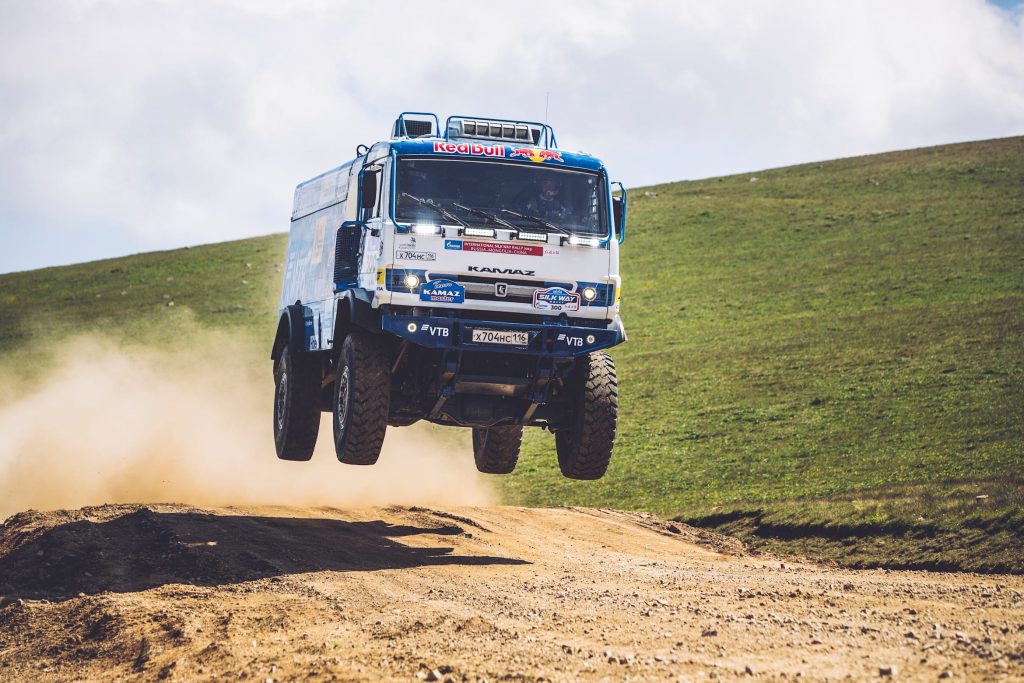
The natural entrant for the Paris Dakar rally is an hugely heavy, near-10-ton military truck. We’re serious, especially when the truck in question, the Kamaz has 1150bhp going to its wheels. Little wonder the hardy machine has achieved wins in 2013, 2017, 2018 and 2019 with just one driver, Eduard Nikolaev, and has fifteen more victories to its name.
The 43509 is the second generation of Kamaz truck to enter, a redesign of the previous 4326. Unsurprisingly, the height and weight of such a beast means it’s prone to rolling, a fact which had been designed into its no-compromise interior, with a thick rollcage and secure bucket seats. Rolling during practice is not unknown either. But despite the top heaviness it’s well balanced, with a 50/50 weight distribution front to rear ensuring its 9.5 ton girth is kept under relative control. A 13-litre, six-cylinder turbocharged diesel engine is responsible for the mammoth power figures, averaging as little as 1.4mpg on sand. Yes, less than 2mpg.
KTM 450 Rally
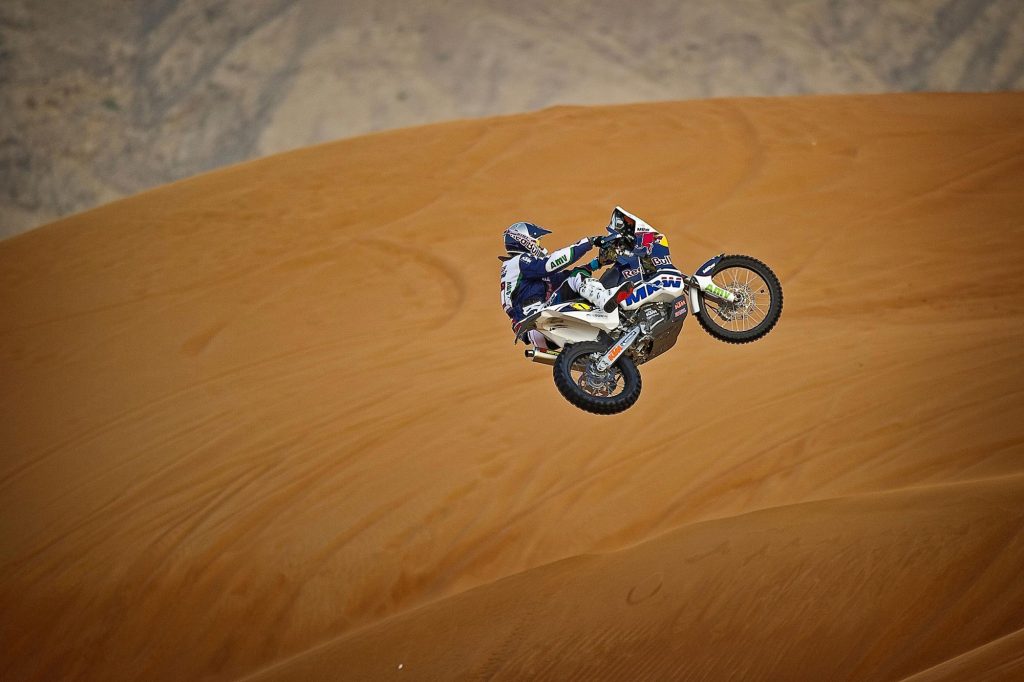
The KTM 450 Rally certainly does what it was designed to do. Unveiled in 2011 with the aim of winning the Dakar Rally, it has competed in each year since and won nine rallies in a row, primarily at the hands of Marc Coma and Cyril Despres. KTM 450 Rallies also hold 7 second place and 5 third place podium spots from the same time frame.
Effectively the model began as a 690 Rally with a smaller engine – the 690 itself no stranger to Dakar, with four wins of its own from 2007-2011. The engine change was made necessary by new rules for the event – where previously larger engines were allowed, for the 2011 Rally it was decided that motorbikes should be restricted to 450cc. For the following year it was redesigned, lightened, slimmed down, and given better weight distribution, a move which only helped to cement its reputation. It took the top spot for nine years running, the latter half of a streak which had seen KTMs win the Dakar every year from 2001-2019. No other bike, or marque, has come close.
Bowler Wildcat
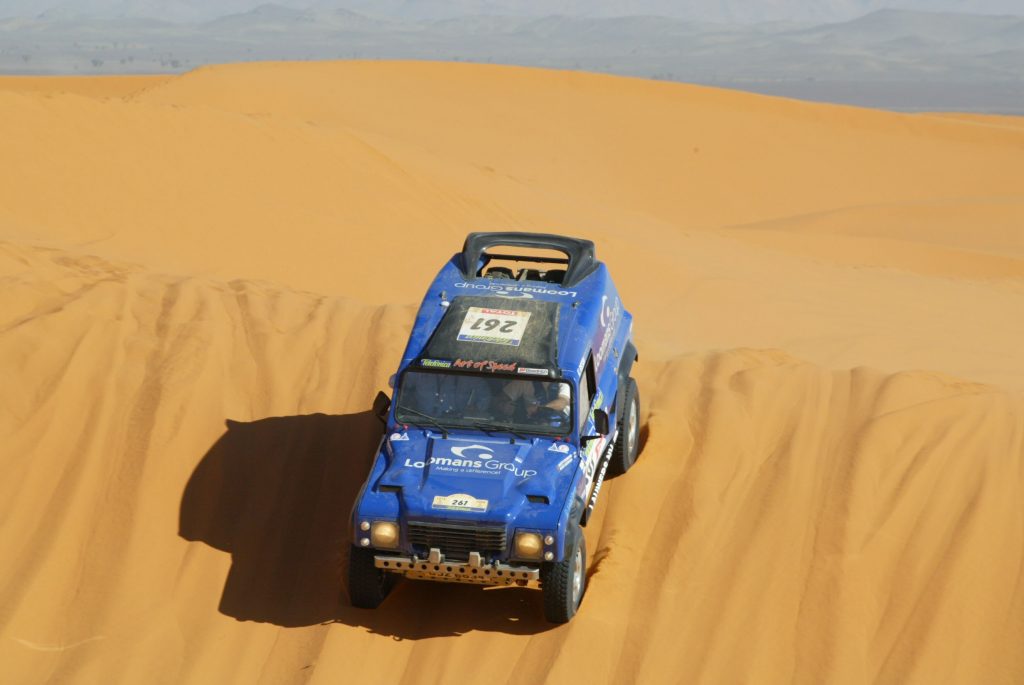
The Paris-Dakar is an off-road rally, yes? And the Land Rover is claimed to be the best 4x4xfar, yes? So it makes sense that a Land Rover should make it into this list – but not, in this case, the Range Rover, which first took part in 1979. We think the Bowler Wildcat is one of the most extreme of the lot. Based on Bowler’s existing Tomcat design, the Wildcat has a tubular spaceframe chassis and Discovery beam axles nestled under its shell, along with a choice of turbodiesel or V8 engines. A hydraulically operated lift plate was fitted to ensure that when beached in sand, the car would get itself out again. Eight Wildcats were entered in the 2004 Dakar rally, and Bowler products have remained popular at the event since. In fact, in 2005 Bowler became the second largest factory entrant in the Paris-Dakar rally, behind Mitsubishi. More recently entries have centred around the Range Rover Sport based Nemesis, but let’s be honest, the idea of a rally-raid Defender that goes like hell is far cooler.
It’s limited to 87mph, but the team behind the beast says that were there no fitment of a speed limiter, as per the rule book, it would be capable of far more. Not that we’d like to see almost ten tons bearing down on us at that sort of speed…
Citroën ZX Rally Raid
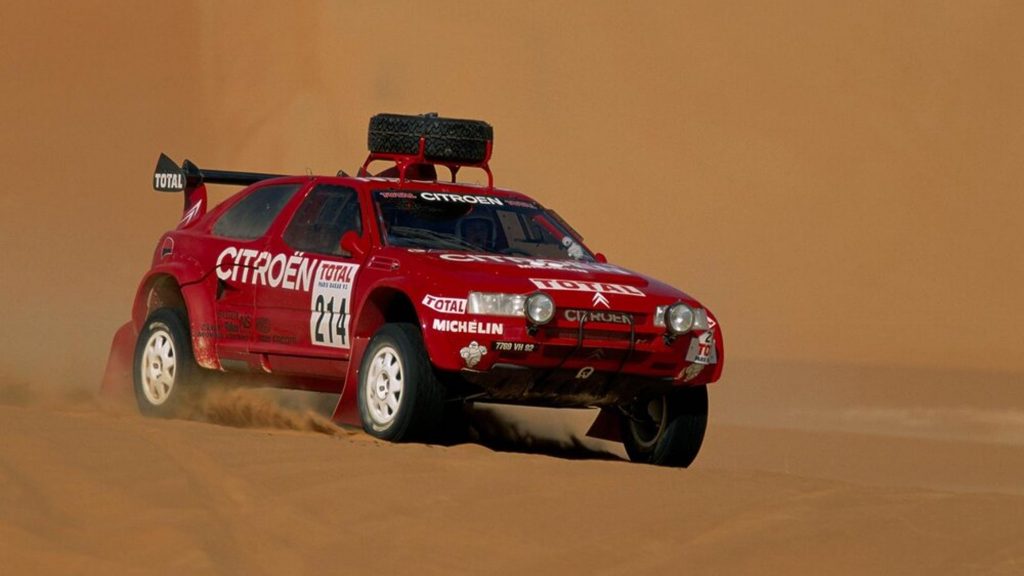
The 205 and 405 T16s weren’t the only cars PSA fielded in the Paris-Dakar. The new Citroën ZX might have been so conventional it hurt, but early in its life it was attracting neither conventional hatch buyers nor those who craved Citroën eccentricity. The ZX Rallye Raid was meant to change that.
Under its shell lurked familiar underpinnings from Peugeot, but the more extreme shell made this the most adventurous PSA entrant of the lot. In the seven years it competed, it won 36 of its 42 races entered, and won the Paris-Dakar rally in 1991, 1994, 1995 and 1996. Early ZX Rallye Raids looked much like the standard car, albeit with far wider wheelarches. But as the model evolved – the Evolution S being the most extreme variant – it grew further away from the production car it ostensibly was. The proportions became more exaggerated, and the ZX Rally Raid was one of the first rally raid cars not to look like the production model upon which it was based save in the details. That and a Dakar career with more wins than anything except the Mitsubishi Pajero Evolution have ensured its place in history.
Extreme E Odyssey 21 Electric
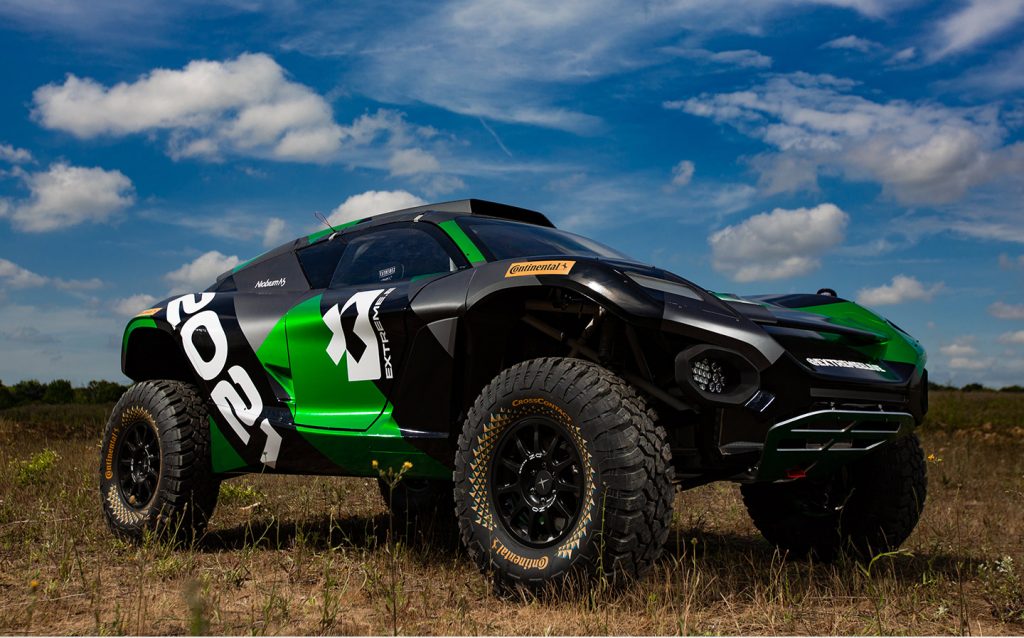
This one’s so extreme it’s in the name. And while it only has one Dakar rally under its belt, it could well be the car to change the face of the event in years to come. While Audi is preparing an electric entrant for 2022, it won’t be the pioneer Audi had hoped it would be. Because the Odyssey was the first electric vehicle to be driven in the event, with Ken Block trying out Extreme E’s purpose built competition machine during the 2020 Dakar Rally.
With battery technology from Williams Advanced Engineering and peak power of 550bhp, the Odyssey can hit 0-60mph in 4.5 seconds, even up a 130 per cent incline. Built by Spark Racing Technology, Odyssey was the backbone for the Extreme E race championship. Entrants will be able to choose elements of bodywork to make this custom electric racer look like more conventional roadgoing models – well, as far as rally raid cars can. In fifteen years, the Dakar Rally will almost exclusively contain vehicles like this Extreme E Odyssey 21, making it a pioneer in one of the world’s most gruelling events. Extreme, even by future standards.
Cagiva Elefant
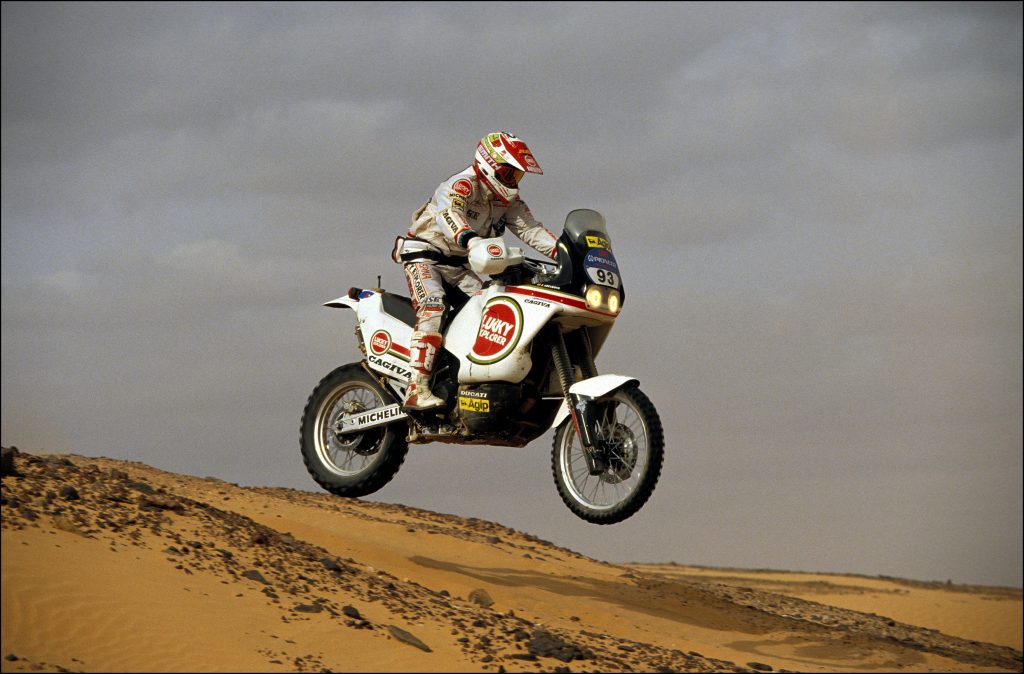
On paper, this bike is certainly extreme – being effectively a Ducati trials bike by another name. Cagiva owned the famed superbike producer during the 1990s, and seeking to create a machine capable of toppling the Honda Africa Twin in the Dakar Rally, it put the 900cc Ducati Desmo V twin into a desert racer type frame. The Elefant was not named for its weight – the elephant had become a lucky symbol for the marque’s owner, Giovanni Castiglioni in the 1950s, and he was adhering to a personal tradition with this name. Two Dakar victories against the might of Yamaha and Honda might not seem like much, but the record doesn’t account for the bike’s 111mph top speed, nor its 59 litre fuel tank – larger than many small cars. Almost 12 inches of suspension travel made this bike one of the best desert bikes of its era. Unlike many of the Dakar winners, it was possible to buy a roadgoing Elefant with the same 900cc engine – slightly heavier, slightly longer, and with a slightly smaller fuel tank, around 1000 were produced for riders. We think that winning the Dakar rally with what was effectively a road spec bike was a fairly cool way to show who was boss.
Herve Drier’s chip van
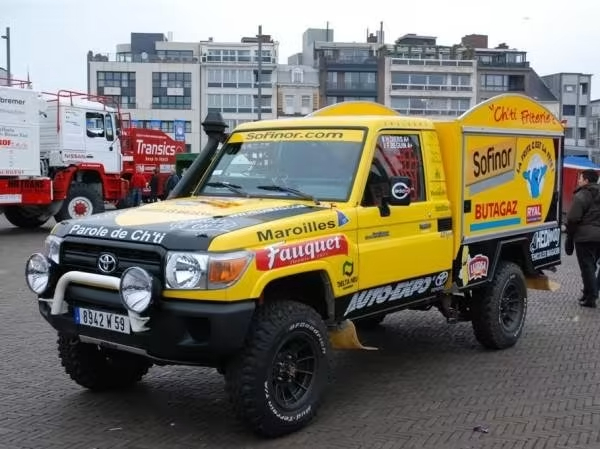
This one is only extreme for being so unusual – a rally car that’s a chip shop on wheels, which has to warrant a mention in any list of extreme Dakar vehicles. It may not be the fastest, nor may it be the most comfortable or the best handling, but no competitor vehicle is equipped to provide frites and mayo for the teams after the day’s rallying is done.
Herve Diers’s Toyota is a fully equipped chip van. Based on a Toyota Land Cruiser with 200bhp, Diers expressed a wish to take his chip shop to Lac Rose in Senegal, and for him this meant the Dakar Rally. The Ch’ti Friterie team was sponsored by McCain, and provided dinner to other teams in the bivouacs at the end of each day’s rallying. While there have been entries in conventional family cars and even on a Vespa scooter, we think that this vehicle takes the top slot for the most unusual entry the race has ever seen. After all, would you want to cross a desert with a boot full of chip fat?
Read more
When Stirling Moss cheated death in the Sahara desert
10 times the F1 championship went to the wire
What it takes to keep a vintage Bentley on the boil for 100,000 miles around the world










“the Odyssey can hit 0-60mph in 4.5 seconds, even up a 130 degree incline.” 130 degrees, really? With 90 degrees being VERTICAL That’s not an incline, that’s an overhang…..
Correct – it should have read 130 per cent, rather than degrees. Thanks for highlighting.
Where are the ‘z’